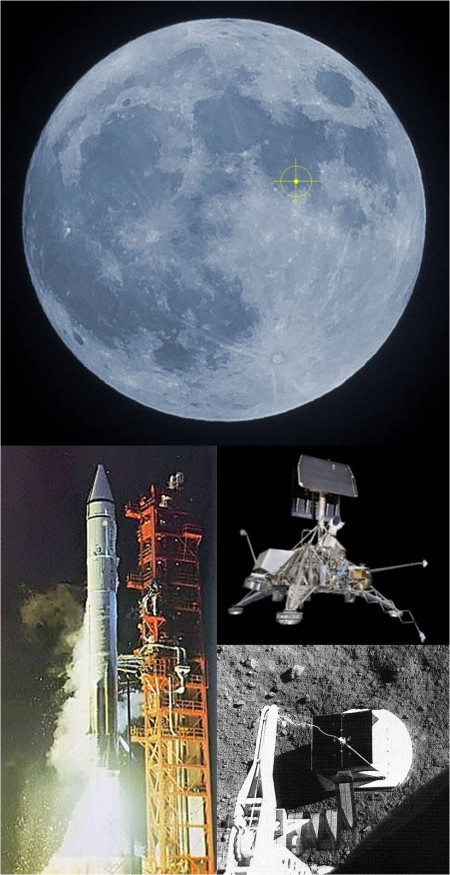Forty-six years ago this month, the Surveyor 5 robotic spacecraft made a successful soft-landing on the Moon’s Mare Tranquilitatis. Touchdown of the 3-legged lander occurred approximately 15 nautical miles northwest of the future Apollo 11 manned lunar landing site.
In preparation for the first manned lunar landing, the United States conducted an extensive investigation of the Moon using Ranger, Lunar Orbiter and Surveyor robotic spacecraft.
Ranger provided close-up photographs of the Moon starting at a distance of roughly 1,100 nautical miles above the lunar surface all the way to impact. Nine (9) Ranger missions were flown between 1961 and 1965. Only the last three (3) missions were successful.
Lunar Orbiter spacecraft mapped 99% of the lunar surface with a resolution of 200 feet or better. Five (5) Lunar Orbiter missions were flown between 1967 and 1968. All were successful.
Surveyor spacecraft were tasked with landing on the Moon and providing detailed photographic, geologic and environmental information about the lunar surface. Seven (7) Surveyor missions were flown between 1966 and 1968. Five (5) spacecraft successfully landed.
The Surveyor spacecraft weighed 2,300 lbs at lift-off and 674 lbs at landing. The 3-legged vehicle stood within a diameter of 15 feet and measured almost 11 feet in height. Surveyor was configured with a television camera, a surface sampler and an alpha-scattering instrument to determine the chemical composition of the lunar soil.
Surveyor 5 lifted-off from Kennedy Space Center’s Launch Complex 36B at 07:57:00 UTC on Friday, 08 September 1967. The trip to the Moon was provided courtesy of a General Dynamics Atlas-Centaur launch vehicle. The Earth-to-Moon transit time was approximately 65 hours.
Immediately after the mid-course correction burn on the second day of flight, a helium tank leak occurred in the spacecraft’s vernier rocket fuel system. This forced engineers to hastily develop a revised retro-braking and landing strategy on the fly to save the mission. Happily, the new descent trajectory worked like a charm as Surveyor 5 successfully landed near the southwestern extremity of Mare Tranquilitatis (i.e., Sea of Tranquility). Vehicle touchdown occurred at 00:46:44 UTC on Monday, 11 September 1967.
During Surveyor 5’s first lunar day, a total of 18,006 photographs were taken and 83 hours of alpha-scattering measurements were acquired. The latter accomplishment marked the first in-situ testing of lunar soil. (For that matter, the first in-situ testing of the soil of any extraterrestrial orb.) By Sunday, 24 September 1967, Surveyor 5 was put into sleep mode for its first lunar night.
On Sunday, 15 October 1967, Surveyor 5 immediately powered-up upon radio command from Earth to begin its second lunar day of surface operations. The spacecraft took an additional 1,048 photographs and accumulated 22 hours of alpha-scattering data during this period. Following two more lunar day/night cycles, Surveyor 5 operations permanently ceased at 00:04:30 UTC on Sunday, 17 December 1967.
The historical record indicates that 19,118 photographs were transmitted during the first, second, and fourth lunar days of the Surveyor 5 mission. Further, the soil composition at the landing site was determined to be quite similar to that of basaltic rock on Earth. In summary, all mission objectives were accomplished.
Although seldom remembered today, the Surveyor Program provided America with a wealth of lunar surface information critical to the Apollo Program. Surveyor’s success provided an added measure of confidence in the attainability of a manned lunar landing. Interestingly, Apollo 11, the first manned lunar landing, took place on Mare Tranquilitatis at a point about 15 nm southeast of the Surveyor 5 landing site.


